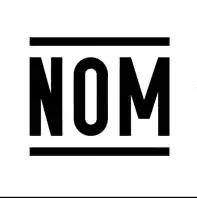
A certification mark on a commercial product or service is a registered mark that enables its owner ("certification body") to certify that the goods or services of a particular provider (who is not the owner of the certification mark) have particular properties, e.g., regional or other origin, material, quality, accuracy, mode of manufacture, being produced by union labor, etc.[1] The standards to which the product is held are stipulated by the owner of the certification mark. [2]
There are essentially three general types of certification marks:[3]
- certifying that goods or services had originated in a particular geographic region (e.g., Roquefort cheese);
- certifying that goods or services meet particular standards for quality, materials, methods of manufacturing, for example, tests by the Underwriter Laboratories;
- certifying that the manufacturer has met certain standards or belong to a certain organization or union (e.g., "union made" in clothing).
The term "certification mark" is very recent, so while discussing historical certification marks, terms "guild sign", "quality mark", "hallmark", and "trade mark" are used by researchers.[4]
A certification mark indicates a property standard or regulation and a claim that the manufacturer has verified compliance with those standards or regulations. The specific specification, test methods, and frequency of testing are published by the standards organization. Certification listing does not necessarily guarantee fitness-for-use. Validation testing, proper usage, and field testing are often needed.
Certification marks distinguished from other marks
Certification marks can be owned by independent companies absolutely unrelated in ownership to the companies, offering goods or rendering services under the particular certification mark.
Certification marks and trademarks
The USPTO states that a certification mark is "a type of trademark".[5] However, it "is a special creature, created for a purpose uniquely different from that of a trademark or service mark", since:[6][1]
- its owner cannot use it (it is used only by providers of certified goods or services);
- the mark does not define the source of the product. Instead, it identifies properties of the good or service (regional or other origin), material, quality, accuracy, etc.
However, what is meant by a collective trade marks or certification mark differs from country to country. However, a common feature of these types of marks is that they may be used by more than one person, as long as the users comply with the regulations of use or standards established by the holder. Those regulations or standards may require that the mark be used only in connection with goods that have a particular geographical origin or specific characteristics. In some jurisdictions, the main difference between collective marks and certification marks is that the former may only be used by members of an association, while certification marks may be used by anyone who complies with the standards defined by the holder of the mark. The holder, which may be a private or a public entity, acts as a certifier verifying that the mark is used according to established standards. Generally, the holder of a certification mark does not itself have the right to use the mark. [7]
For various reasons, usually relating to technical issues, certification marks are difficult to register, especially in relation to services. One practical workaround for trademark owners is to register the mark as an ordinary trademark in relation to quality control and similar services.
Certification marks and approvals
Certification is often mistakenly referred to as an approval, which is not true. Organizations such as Underwriters Laboratories, TÜV Rheinland, NTA Inc, and CSA International will test the products according to standard procedures and "list" them as compliant to that standard. They do not approve anything except the use of the mark to show that a product has been certified for compliance with such specific standard. Thus, for instance, a product certification mark for a fire door or for a spray fireproofing product does not signify its universal acceptance for use within a building. Approvals are up to the Authority Having Jurisdiction (AHJ), such as a municipal building inspector or fire prevention officer.
Regulations
Trademark laws in countries, such as the United States,[8] Australia,[9] and others that provide for the filing of applications to register certificate marks also usually require the submission of regulations, which define a number of issues, including:
- People authorized to use the certification mark
- Characteristics that the certification mark certifies
- How the certification or standards tests these characteristics and supervises use of the mark
- What the dispute resolution procedures are
The main purpose of the regulations is to protect consumers against misleading practices.
Examples
| Primary jurisdiction | Body/mark | Image |
|---|---|---|
| International |
|
|
|
| |
|
 | |
|
||
|
||
| Eurasian Customs Union |
|
|
|
||
|
||
|
||
|
||
|
||
|
||
|
||
| ||
|
||
|
||
|
||
|
||
|
|
International treaties and certification marks
Many jurisdictions have been required to amend their trade mark legislation to accommodate protection of certification marks under the TRIPs treaty.
Some jurisdictions recognise certification marks from other jurisdictions. This means good manufactured in one country may need not go through certification in another. One example is the European Union recognition of Australia and New Zealand marks based on an International treaty.[12]
Cases
Cases involving certification marks include:
- Re Legal Aid Board's Trade Mark Application (unreported 3 October 2000, UK CA)
- the Sea Island Cotton case [1989]RPC 87
See also
References
- 1 2 U.S. Department of Commerce, Patent and Trademark Office 1997, p. 1300-33.
- ↑ Belson 2002, p. 1.
- ↑ U.S. Department of Commerce, Patent and Trademark Office 1997, p. 1300-33-1300-34.
- ↑ De Munck 2012, p. 1069.
- ↑ "Certification mark applications". uspto.gov.
- ↑ John Marshall Law School 2010, p. 160.
- ↑ "Geographical Indications: An Introduction, 2nd edition". www.wipo.int. p. 29. Retrieved 5 December 2023.
- ↑ "Submission of the United States of America Certification and Collective Marks Formalities" (PDF). World Intellectual Property Organisation. February 2009. Retrieved 13 June 2017.
- ↑ "Certification trade marks". Australian Competition and Consumer Commission. 11 September 2012. Retrieved 13 June 2017.
- ↑ "Allergy Standards". allergystandards.com Allergy Standards.
- ↑ "Allergy Standards". allergystandards.com Allergy Standards.
- ↑ “Agreement on Mutual Recognition in relation to Conformity Assessment, Certificates and Markings between Australia and the European Community ATS 2 of 1999“ Archived 16 April 2017 at the Wayback Machine. Australasian Legal Information Institute, Australian Treaties Library. Retrieved on 15 April 2017.
Sources
- John Marshall Law School (2010). The Intersection of Intellectual Property Law and the Green Movement: RIPL's Green Issue 2010. Quid Pro, LLC. ISBN 978-1-61027-973-4. Retrieved 29 November 2023.
- Trademark Manual of Examining Procedure (TMEP). U.S. Department of Commerce, Patent and Trademark Office. 1997. Retrieved 29 November 2023.
- Belson, J. (2002). Certification Marks. Special Report Series. Sweet & Maxwell. ISBN 978-0-421-75820-9. Retrieved 29 November 2023.
- De Munck, Bert (December 2012). "The agency of branding and the location of value. Hallmarks and monograms in early modern tableware industries". Business History. 54 (7): 1055–1076. doi:10.1080/00076791.2012.683422. eISSN 1743-7938. ISSN 0007-6791. S2CID 218587496.
External links
- List of Standard Certification Marks – description of the most common standard certification marks









